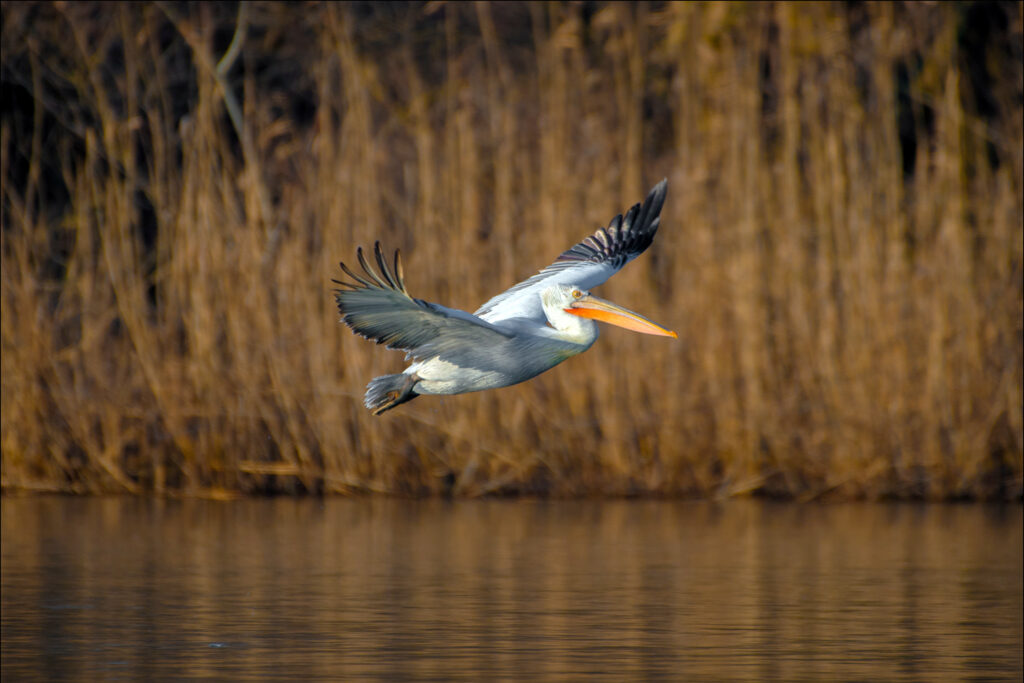Despite the difficult weather conditions, at the end of December 2021, winter survey of the Dalmatian pelican took place in Ukraine. It was organized simultaneously with similar surveys in other Eastern European countries. This year’s results give hope: three and a half times more pelicans are left to spend the winter in the Danube Delta than last year.
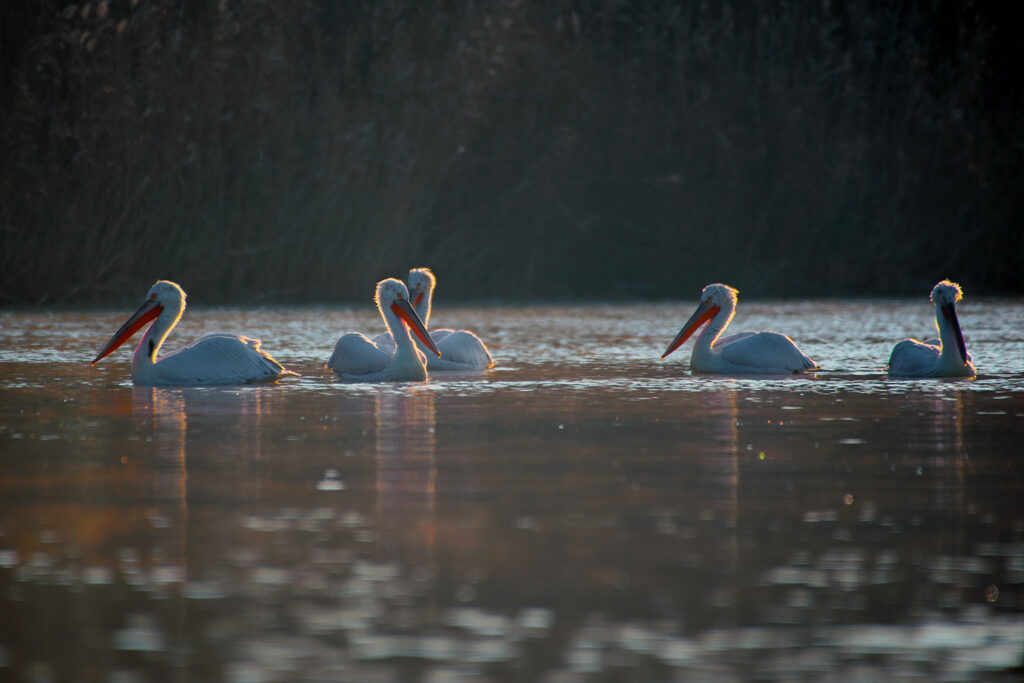
During the penultimate week of last year, the staff of the Danube Biosphere Reserve (DBR), ornithologist Maxim Yakovlev and zoologist Alexander Gaidash, visited the Danube Delta in search of Dalmatian pelicans. In Ukraine the counts took place as part of the “Pelican Way of LIFE” project, being implemented in our country by Rewilding Ukraine in cooperation with the DBR. Using cars, boats, drones or on foot, scientists surveyed remote areas of the Kiliya part of the Danube Delta, including Stentsivsko-Zhebriyanivsky floodplains, Sasyk Reservoir, as well as the Danube Lakes – Kitaj, Yalpug, Cahul, Katlabukh, Lung, Kugurlui. Due to the severe frost, some channels were covered with ice, which had to be broken to get the boat on the water.
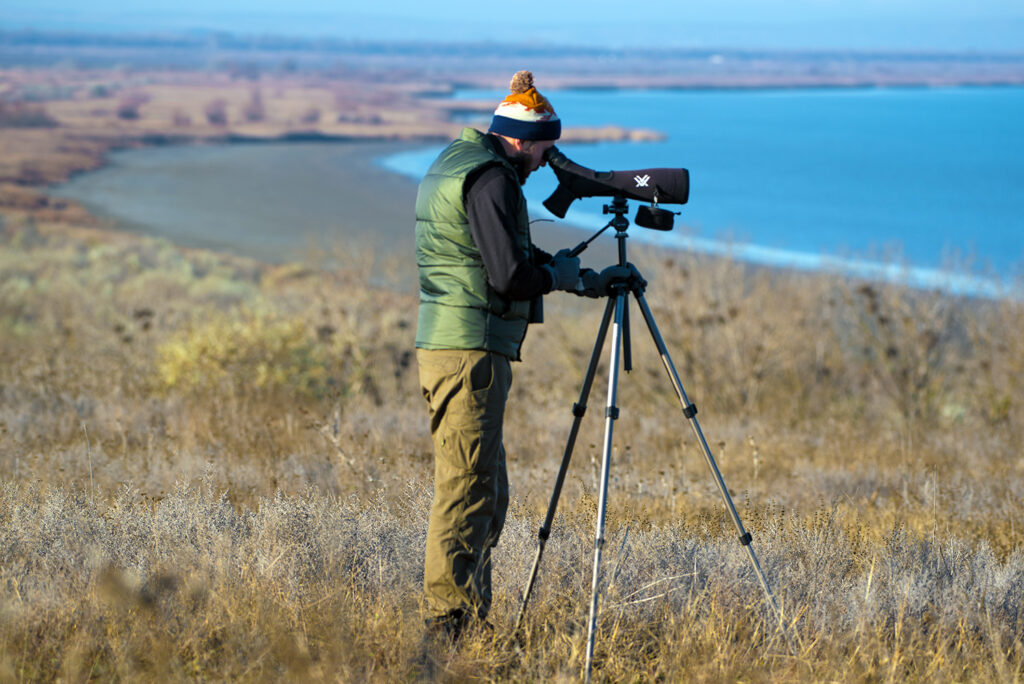
In total, scientists counted 119 Dalmatian pelicans, most of which were observed on Lake Cahul, where they fed on the water along with great cormorants and gulls. Groups of more than ten individuals were also observed at the mouth Bystroe, in the Stentsivsko-Zhebriyanivsky floodplains, and in the Kuril shoals. Last year, in the same period, 33 representatives of this rare species, protected by the Red Book and international documents, were counted in the same areas. In addition to the Danube Delta, in the autumn the big groups of Dalmatian pelicans were noticed in the Tuzly group of estuaries, which attract birds with shallow areas full of fish, including crucian carp.
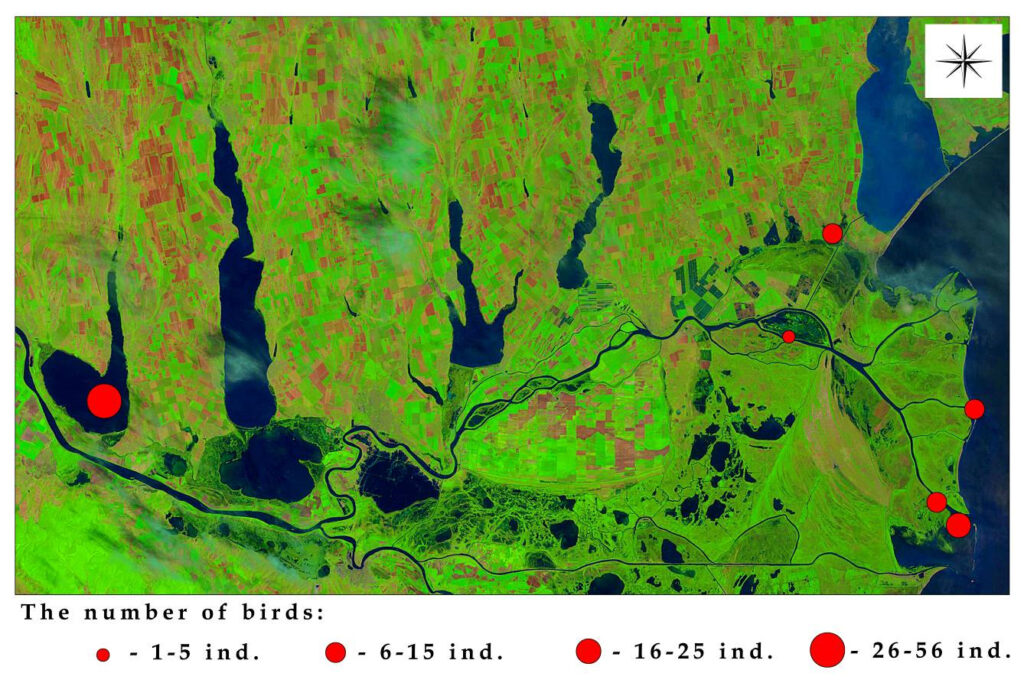
“In general, over the past 15 years, there has been a positive trend in the population of the species, but the number of birds that we see during the winter surveys, largely depends on climate conditions. For example, 2 years ago, during the warm winter, we counted 155 Dalmatian pelicans at one point at a time. This is the largest group of species I have ever seen. The floodplains of the Danube and the Danube Lakes are very mosaic, so we may not have seen some birds, especially when they feed in reeds or roost on the islands of vegetation, also some birds fly to the Romanian part of the delta in search of food. But we are still happy to note this year’s increase in pelicans’ numbers in our part of the delta by more than three and a half times,” says Maxim Yakovlev, ornithologist of the DBR.
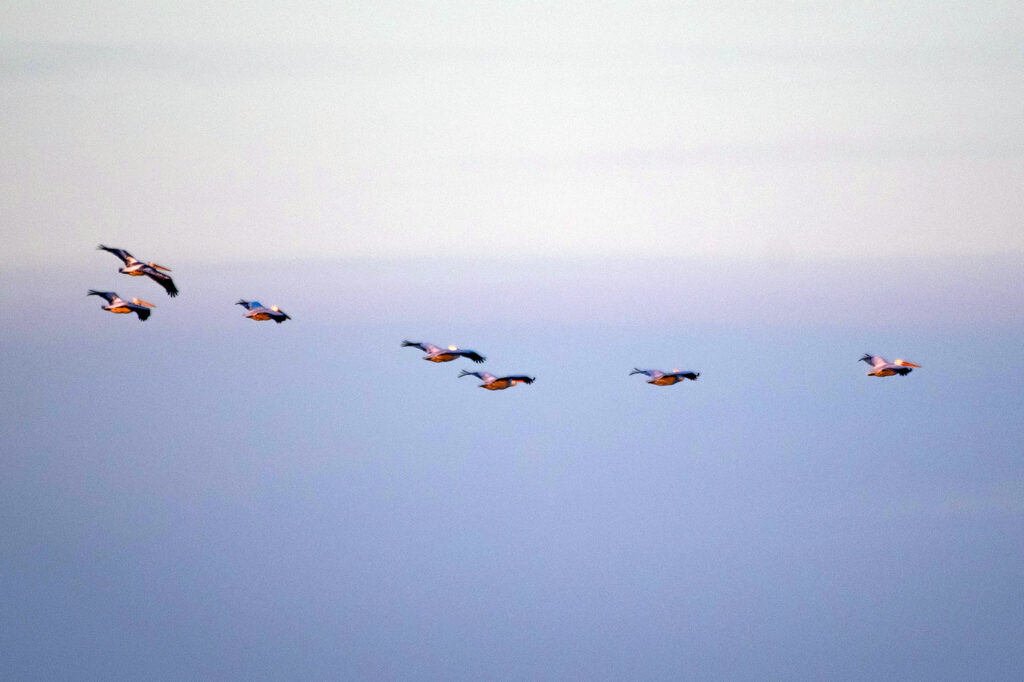
Simultaneous counts of the Dalmatian pelican were also conducted in Greece, Bulgaria, Romania, Albania and Montenegro. It is important for scientists to learn about the number of birds in the region as a whole, as well as in individual areas, to note which places they choose for feeding, roosting or nesting. This will improve conservation measures of the species in the long run.
“Last year, two nesting platforms for Dalmatian pelicans were built in the coastal part of the Danube Delta. This year it is planned to install similar platforms in other locations in the region. We will place dummy pelicans on the platforms to attract the attention of real birds. We hope that this will help to create more favorable conditions for their breeding and form nesting colonies of the species in our country. We will observe the platforms and in a few months we will tell if we manage to attract pelicans to them. In other countries, such as Bulgaria, birds love to build their nests on the platforms,” adds Mykhailo Nesterenko, executive director of Rewilding Ukraine.
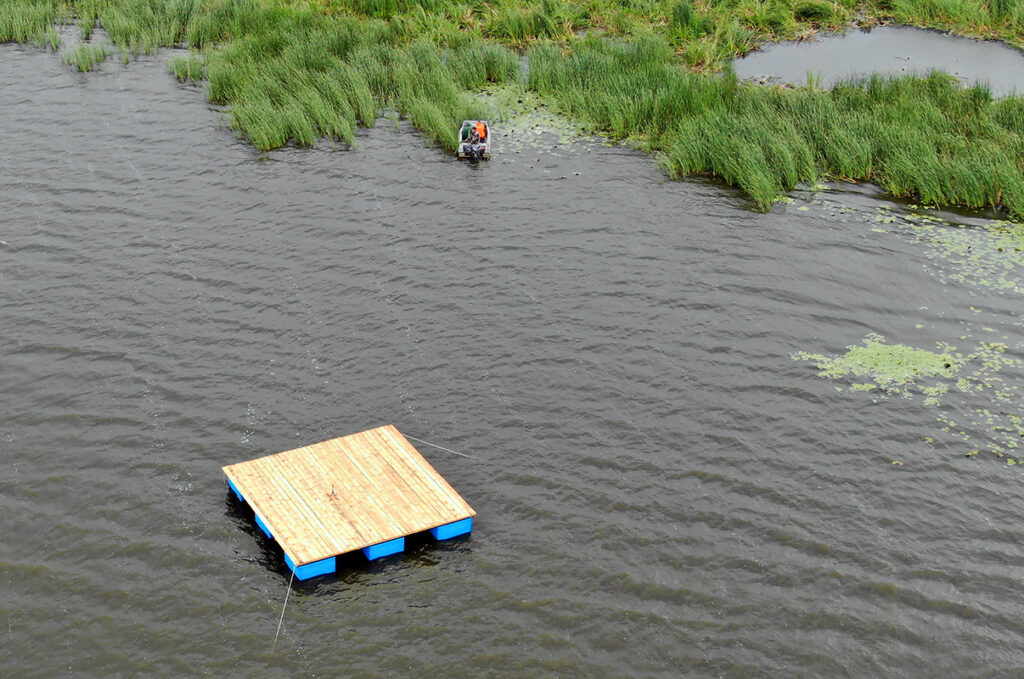
The “Pelican Way of LIFE” project (LIFE18 NAT/NL/000716), which helps preserve and restore the Dalmatian pelican population in the Black Sea and the Mediterranean, focuses not only on species research and practical conservation measures. We understand the importance of raising awareness of this majestic bird, which is an ambassador of healthy rivers and wetlands. The project is coordinated by Rewilding Europe and funded by the LIFE Programme of the European Union and the Arcadia Foundation.
